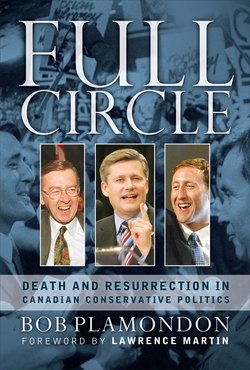Читать книгу Full Circle: Death and Resurrection In Canadian Conservative Politics - Bob Plamondon - Страница 8
SIR JOHN A. MACDONALD
ОглавлениеCanada’s first prime minister was, arguably, the master of bringing diverse interests and people together. Sir John A. Macdonald built coalitions not just to form a government, but also to establish a nation. Macdonald became a Father of Confederation by bringing together English and French, Reformers and Conservatives, Canadian nationalists, and big business into one political party.
Macdonald’s most significant and lasting achievement in nation building was the drawing together of English and French. Macdonald recognized both the diversity and unity of Canada when he said: “Let us be English or let us be French... and above all let us be Canadians.” Those who view Macdonald as a great Conservative statesman must understand that he did not win government on the basis of pure ideology or an uncompromising vision. His greatness came from a broad and inclusive vision for Canada and a capacity to cobble together a diverse stream of interests. He was not always noble; his most frequently used currencies to sway public opinion, and the party faithful, were patronage and cash. But for all his well-known faults, he was engaging and charming.
Macdonald was no stranger to compromise as a strategy to build support. As much as he wanted a strong central government, he under- stood that for Confederation to happen provinces required strong powers. Yet Macdonald could clearly see the destruction from the Civil War to the south, fuelled largely by a dispute over states’ rights. Nonetheless, Macdonald and his fellow Fathers of Confederation made the many compromises required to gain the confidence of French Canadians. When Quebec was worried about being outnumbered in a federal parliament that was based on representation by population, it was granted special status assuring the province a minimum of 65 seats in the federal legislature. Quebec would also be given the distinct power to protect the French language and culture. It remains unclear if the
Fathers of Confederation, in making these compromises, were limiting the protection of the French language to Quebec, or if they envisioned a bilingual and bicultural Canada. However, the key here is that what was ultimately offered was enough to bring Quebec into Confederation. Macdonald did not insist on the equality of provinces; he compromised and built a coalition that the people would accept.
We think of Macdonald as the first leader of the Conservative party. While Conservatives lovingly claim Sir John A. Macdonald as exclusively one of their own, however, the party he represented in Parliament was officially called the Liberal-Conservative Party. Today it would seem something of an insult for the word “Liberal” to be attached to the legacy of Sir John, let alone having it appear first in the party name. But Macdonald led a party with a Liberal prefix because he needed to build a coalition that could lead and win the country. The Liberal moniker stayed with the party until the end of the nineteenth century, when the name became the Conservative Party.
The central theme in the various compromises that allowed Macdonald to build a sometimes diverse coalition of disparate interests is that he knew what it took to win. And that’s precisely what he did in winning six of the country’s first seven elections, all victories with a majority government.
